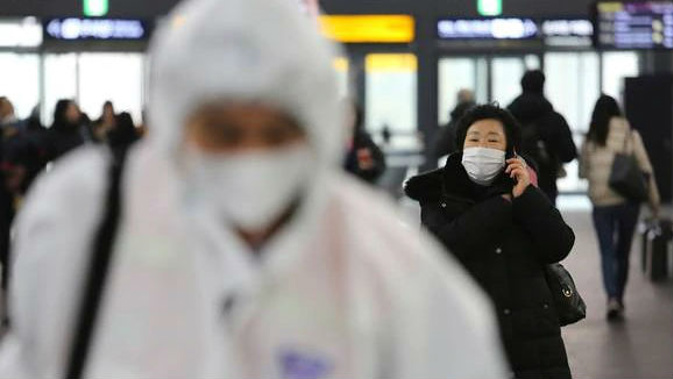
The death toll and number of people infected by the Wuhan coronavirus continues to grow, with no signs of slowing despite severe quarantine and population control methods put in place in central China.
The number of confirmed cases globally stood at 28,256 as of Thursday morning, with more than 28,000 of those in China. The number of cases in China grew by 3,694, or 15%, on the previous day. There have been 563 deaths so far, all but two of which were in China, with one in the Philippines and one in Hong Kong.
Hong Kong announced a mandatory 14-day quarantine for all people entering the semi-autonomous city from the Chinese mainland, including residents. The move comes after all but three border crossings were closed to try and contain the virus.
"It is expected that the measure will further reduce cross-boundary flow of people between Hong Kong and the Mainland, thus reducing the risk of transmission and spread of the disease in the community," the city's health authority said.
Speaking Wednesday, the city's leader Carrie Lam said they were "seeing a worsening trend of the outbreak," as the number of confirmed cases grew to 21. At least three of those cases did not travel outside of Hong Kong during the incubation period, which suggests there may be community transmission taking place, Lam said.
Hospital authorities have asked striking employees to return to work Thursday, as the number of cases in the city continues to grow. At least 7,000 healthcare workers walked out this week demanding a full closure of the border with China and extra gear for health workers.
Where is Xi?
With at least three cities in China reporting more than a thousand cases each, there are signs that the stringent controls put in place to try and contain the virus may not be working.
In a front page editorial Tuesday, the People's Daily -- the official mouthpiece of the Communist Party -- called for a "people's war" against the virus, adding that people should "more closely rally around the CCP with comrade Xi Jinping as the core."
Xi himself, however, has been missing in recent days, not appearing on front pages or in the nightly newscast on state broadcaster CCTV. This is extremely unusual for the Chinese leader, who typically dominates media coverage even when his activities are relatively routine.
While he appeared briefly on a Wednesday night broadcast, showing a meeting between Xi and Cambodian Prime Minister Hun Sen, he has still not been shown directing or engaging with the virus relief effort -- though state media has been keen to emphasize that Xi is doing so behind the scenes.
"The central government may be still in an active process in gauging when it's appropriate for Xi to appear to take the reins of the coronavirus fighting efforts," said Rui Zhong, a China expert at the Wilson Center.
Treatment methods
With fear of the virus -- and reported cases -- growing worldwide, the World Health Organization (WHO) on Tuesday urged governments not to impose travel and trade restrictions, though many already have.
"We reiterate our call to all countries not to impose restrictions that unnecessarily interfere with international travel and trade. Such restrictions can have the effect of increasing fear and stigma, with little public health benefit," Tedros Adhanom Ghebreyesus said Tuesday during a briefing to the United Nations' executive board in Geneva.
"Where such measures have been implemented, we urge that they are short in duration, proportionate to the public health risks, and are reconsidered regularly as the situation evolves," he added.
He also called on member states to "facilitate rapid collaboration between the public and private sectors to develop the diagnostics, medicines and vaccines," in order to bring the outbreak under control.
Those efforts are under way globally, with slow progress being made both on treatment methods and vaccines. The lack of both throughout this outbreak is one factor which makes it far scarier than seasonal influenza and similar bugs -- while the flu kills more people annually, there is a vaccine and hospitals are well acquainted with treating and containing it.
Officials in Thailand said Monday that a second patient has been treated with a new combination of HIV and flu drugs, after doctors said the cocktail had been successful in treating a 71-year-old woman from China with the virus. Officials have yet to provide an update on the success of the treatment for the second patient.
A purpose-built hospital dedicated to treating the virus also opened in Wuhan Monday. The institution was constructed in under a week, and a second is due to open Thursday. Both will only handle coronavirus patients, helping to take the pressure off the severely stretched Wuhan healthcare system.
Chinese health officials said that the average time needed for a patient to recover is nine days. However, in Hubei province, the average recovery time is currently at 20 days because there are more severe cases.
The death rate has also been higher in Hubei because of a lack of hospital beds and the large number of cases creating delays in treatment.
Take your Radio, Podcasts and Music with you









